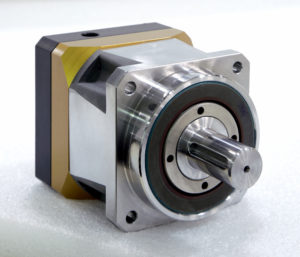Most engineers recognize that gearheads can be used to create a better inertia match between the object that is being moved and the motor being driven. Put simply, it is dictated by the gearhead ratio where the object reflected inertia to the motor is reduced by 1/ratio2.
So what should the correct inertia be?
Typically the rule of thumb says the object inertia should be no greater than five times the motor inertia (5:1 ratio) in a motion control application. This will deliver very stiff and controllable motion.
 However, getting to this ratio may be difficult at times, mainly due to the fact that as you add more ratio to the gearhead, you will require more speed from the motor, which may not be available or may exceed the input speed limitations of the gearhead. Further, choosing a higher gearhead ratio will typically be costlier due to the extra gears that need to be incorporated within it.
However, getting to this ratio may be difficult at times, mainly due to the fact that as you add more ratio to the gearhead, you will require more speed from the motor, which may not be available or may exceed the input speed limitations of the gearhead. Further, choosing a higher gearhead ratio will typically be costlier due to the extra gears that need to be incorporated within it.
So here are some useful insights from the our application engineering experts on what you need to know about gearhead and servo motors.
To read the complete blog post, click here.
